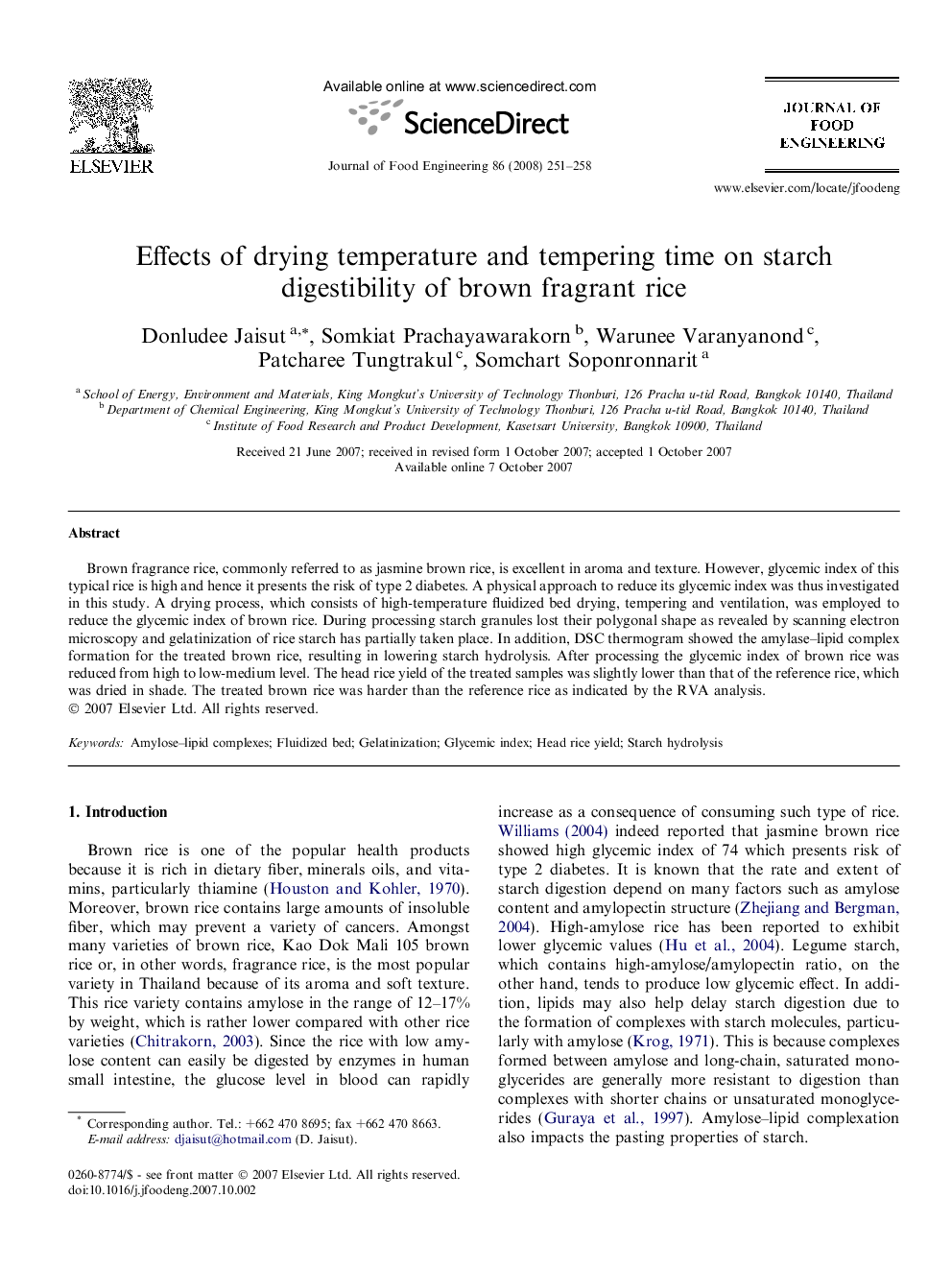| Article ID | Journal | Published Year | Pages | File Type |
|---|---|---|---|---|
| 225728 | Journal of Food Engineering | 2008 | 8 Pages |
Brown fragrance rice, commonly referred to as jasmine brown rice, is excellent in aroma and texture. However, glycemic index of this typical rice is high and hence it presents the risk of type 2 diabetes. A physical approach to reduce its glycemic index was thus investigated in this study. A drying process, which consists of high-temperature fluidized bed drying, tempering and ventilation, was employed to reduce the glycemic index of brown rice. During processing starch granules lost their polygonal shape as revealed by scanning electron microscopy and gelatinization of rice starch has partially taken place. In addition, DSC thermogram showed the amylase–lipid complex formation for the treated brown rice, resulting in lowering starch hydrolysis. After processing the glycemic index of brown rice was reduced from high to low-medium level. The head rice yield of the treated samples was slightly lower than that of the reference rice, which was dried in shade. The treated brown rice was harder than the reference rice as indicated by the RVA analysis.
